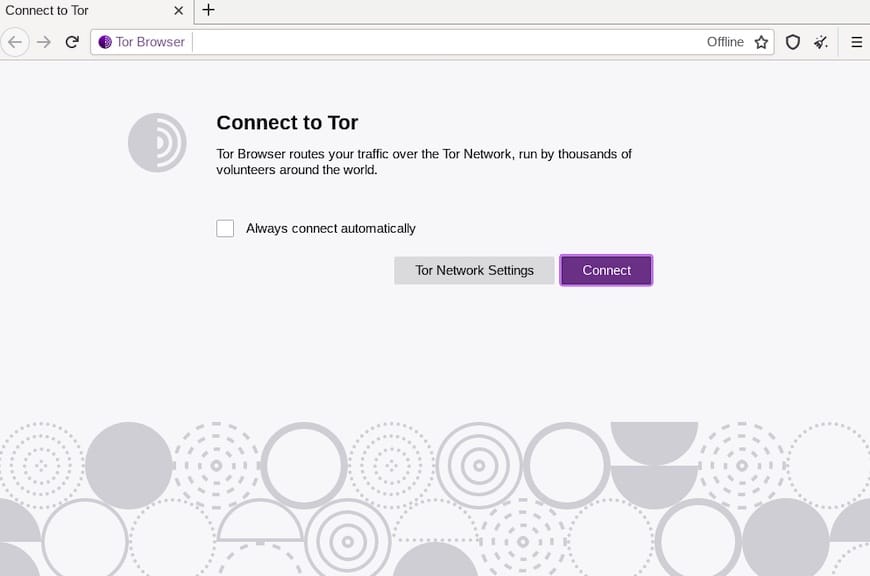How To Install Tor Browser on Fedora 40

In today’s digital landscape, privacy and security have become paramount concerns for internet users worldwide. Fedora 40, the latest release of the popular Linux distribution, offers a robust and secure operating system. However, to enhance your online anonymity and protect your browsing habits, installing Tor Browser on Fedora 40 is an excellent step forward.
This comprehensive guide will walk you through various methods to install Tor Browser on your Fedora 40 system, ensuring you can browse the web securely and anonymously. Whether you’re a privacy enthusiast, a journalist, or simply someone who values their online freedom, this article will provide you with the knowledge and tools to get started with Tor Browser on Fedora 40.
Understanding Tor Browser
Before diving into the installation process, it’s crucial to understand what Tor Browser is and why it’s an essential tool for privacy-conscious users.
Tor Browser is a modified version of Mozilla Firefox that routes your internet traffic through a network of volunteer-operated servers called relays. This process, known as onion routing, encrypts your data multiple times and bounces it through several nodes, making it extremely difficult for anyone to trace your online activities back to you.
Key features of Tor Browser include:
- Anonymity: Conceals your IP address and location
- Encryption: Protects your data from eavesdroppers
- Access to .onion sites: Enables browsing of the dark web
- Anti-fingerprinting measures: Prevents websites from identifying you based on your browser configuration
Unlike regular web browsers, Tor Browser is designed with privacy as its core principle, making it an indispensable tool for those seeking to maintain their online anonymity.
Prerequisites for Installation
Before proceeding with the installation of Tor Browser on Fedora 40, ensure that your system meets the following requirements:
- A computer running Fedora 40 (Workstation or Server edition)
- An active internet connection
- Administrative privileges (sudo access)
- At least 200MB of free disk space
- Updated system packages
To update your Fedora 40 system, open a terminal and run the following command:
sudo dnf updateThis will ensure that your system has the latest security patches and software versions, reducing the risk of compatibility issues during the Tor Browser installation process.
Methods to Install Tor Browser on Fedora 40
There are several ways to install Tor Browser on Fedora 40. We’ll cover four primary methods, each with its own advantages and considerations.
1. Using the Official Tor Project Repository
Installing Tor Browser directly from the official Tor Project repository is the recommended method, as it ensures you’re getting the latest version directly from the source.
Follow these steps to add the Tor Project repository and install Tor Browser:
- Open a terminal window.
- Add the Tor Project repository by creating a new file:
sudo nano /etc/yum.repos.d/tor.repo - Add the following content to the file:
[tor] name=Tor for Fedora $releasever - $basearch baseurl=https://rpm.torproject.org/fedora/$releasever/$basearch enabled=1 gpgcheck=1 gpgkey=https://rpm.torproject.org/fedora/public_gpg.key cost=100 - Save the file and exit the text editor (in nano, press Ctrl+X, then Y, then Enter).
- Import the Tor Project GPG key:
sudo rpm --import https://rpm.torproject.org/fedora/public_gpg.key - Update the package list:
sudo dnf update - Install Tor Browser:
sudo dnf install torbrowser-launcher
After the installation is complete, you can launch Tor Browser from the application menu or by running torbrowser-launcher in the terminal.
2. Installing via Tor Browser Launcher
Tor Browser Launcher is a helper application that automates the process of downloading, verifying, and installing Tor Browser. This method is particularly useful for users who prefer a more streamlined installation process.
To install Tor Browser using the launcher:
- Open a terminal window.
- Install Tor Browser Launcher using DNF:
sudo dnf install torbrowser-launcher - Once installed, run the launcher:
torbrowser-launcher
The launcher will download and verify the latest version of Tor Browser, then install it on your system. This method ensures that you always have the most up-to-date version of Tor Browser.
If you encounter any issues with the launcher, try running it with the --verbose flag to get more detailed output:
torbrowser-launcher --verbose3. Manual Installation from the Official Website
For users who prefer more control over the installation process or need to install Tor Browser on a system without internet access, manual installation is an option.
Follow these steps to manually install the Tor Browser:
- Visit the official Tor Project website.
- Download the Linux 64-bit version of Tor Browser.
- Open a terminal and navigate to the directory containing the downloaded file.
- Extract the archive:
tar -xvf tor-browser-linux64-*.tar.xz - Move the extracted folder to a suitable location:
sudo mv tor-browser_en-US /opt/tor-browser - Create a desktop shortcut:
echo "[Desktop Entry] Name=Tor Browser Exec=/opt/tor-browser/start-tor-browser.desktop Icon=/opt/tor-browser/browser/chrome/icons/default/default128.png Type=Application Categories=Network;WebBrowser;" | sudo tee /usr/share/applications/tor-browser.desktop
You can now launch Tor Browser from the application menu or by running /opt/tor-browser/start-tor-browser.desktop in the terminal.
4. Alternative Methods
In addition to the methods mentioned above, there are alternative ways to install Tor Browser on Fedora 40 using package managers like Flatpak and Snap.
Installing Tor Browser using Flatpak
Flatpak is a universal package management system that works across different Linux distributions. To install Tor Browser using Flatpak:
- Ensure Flatpak is installed on your system:
sudo dnf install flatpak - Add the Flathub repository:
flatpak remote-add --if-not-exists flathub https://flathub.org/repo/flathub.flatpakrepo - Install Tor Browser:
flatpak install flathub com.github.micahflee.torbrowser-launcher
Installing Tor Browser using Snap
Snap is another universal package management system. To install Tor Browser using Snap:
- Install Snap on Fedora 40:
sudo dnf install snapd - Enable the Snap service:
sudo systemctl enable --now snapd.socket - Install Tor Browser:
sudo snap install tor-browser
Both Flatpak and Snap offer the advantage of easy updates and isolation from the rest of the system. However, they may have slightly larger installation sizes and potentially slower startup times compared to native packages.
First Run and Configuration
After successfully installing Tor Browser on your Fedora 40 system, it’s time to configure it for optimal privacy and performance.
- Launch Tor Browser from the application menu or terminal.
- On first run, you’ll see the Tor Network Settings window. Choose whether to connect directly to the Tor network or configure bridge relays if you’re in a censored area.
- Click “Connect” to establish a connection to the Tor network.
- Once connected, you’ll see the Tor Browser welcome page.

To further enhance your privacy, consider adjusting the following settings:
- Security Level: Click the shield icon in the toolbar and choose your preferred security level (Standard, Safer, or Safest).
- NoScript: Configure JavaScript permissions for individual websites by clicking the NoScript icon in the toolbar.
- HTTPS Everywhere: Ensure HTTPS Everywhere is enabled to force secure connections whenever possible.
Security Considerations and Best Practices
While Tor Browser significantly enhances your online privacy, it’s essential to follow best practices to maintain your anonymity:
- Keep Tor Browser updated: Regular updates patch security vulnerabilities and improve performance.
- Don’t maximize the browser window: This can reveal your screen size, potentially compromising your anonymity.
- Avoid installing additional add-ons: Extra extensions may introduce vulnerabilities or leak information.
- Use HTTPS whenever possible: This adds an extra layer of encryption to your communications.
- Be cautious when downloading files: Only download from trusted sources to avoid malware.
- Don’t use Tor for activities that require your real identity: Logging into personal accounts can compromise your anonymity.
Congratulations! You have successfully installed Tor Browser. Thanks for using this tutorial for installing the Tor Browser on your Fedora 40 system. For additional help or useful information, we recommend you check the official Tor Browser website.